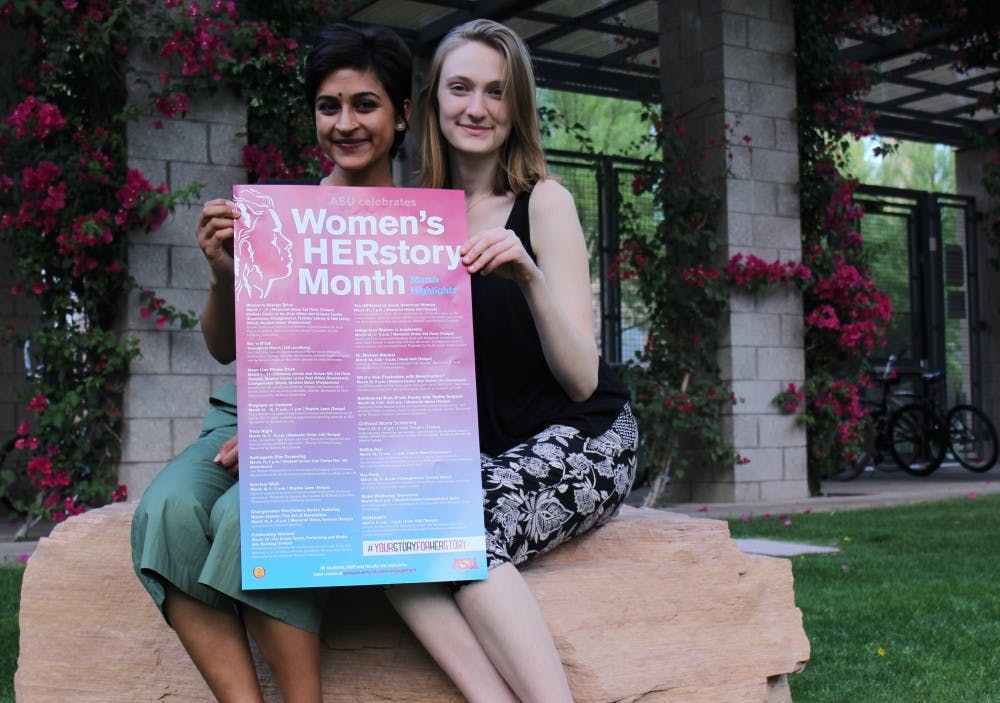Ninety-seven years after the ratification of the 19th amendment, which gave women the right to vote, we've only had one woman win the presidential nomination from a major political party. Inequality persists, making it especially alarming that women’s history is largely missing from education and discussion.
March is National Women’s History Month, and like Black History Month, it is only one small piece of the larger picture of neglected history that needs to be covered. This month focuses both on the women who have made history and on everyday women.
International Women’s Day, celebrated on March 8, is a big part of March’s recognition of “the social, economic, cultural and political achievements of women,” according to the International Women’s Day website. This day and month are crucial to obtaining gender equality, and without proper education during this month and year-round, society will not change.
“There are a lot of people who do not really believe or see the effects of gender inequality on a daily basis,” said Laurie Stoff, senior lecturer and Barrett honors faculty fellow.
“They think that women fought for equal rights during the first wave of feminism in the late 19th and early 20th centuries, and once they won the right to vote that the problems of representation were solved, and so women should be essentially satisfied with the progress that’s been made.”
However, learning about gender inequality is essential to social progress and creating solutions to problems like unequal wages and representation.
This year's theme for National Women's History Month focuses on women who have changed gender roles in the business field and labor forces. In the last year, women have smashed through the glass ceiling that limits them and are inspiring young girls to be more ambitious.
In the political arena, Senator Catherine Cortez Masto became the first Latina senator, while in the Olympic arena Simone Manuel became the first African American women to win an individual medal in swimming.
On a more local scale, Dawn Braid became the first full-time female coach in the NHL when the Arizona Coyotes hired her. In the military, when Air Force Gen. Lori Robinson was chosen to lead the U.S. Northern Command, she also became the first woman in a combatant commander position.
“People will complain and say, ‘Why don’t we have Men’s History Month?’ We do. It is the rest of the 11 months of the year because most history classes, most history celebrations focus on the achievements of men,” Stoff said.
By not teaching our full history and leaving women out of our history books and our discussions, we are failing to help students develop the tools necessary for change. Additionally, by not educating students about all sexes and races we are teaching them through the lenses of sexism and racism.
“Although some students might not have experienced or recognized that they experienced gender-based bias in their lives, I imagine, unfortunately that they likely will moving forward,” Madelaine Adelman, associate professor of justice and social injury in the School of Social Transformation, said.
People have preconceived notions about feminism that are untrue. However, most of them do not have the facts and figures or a diverse education, which includes the history of all races and sexes, so it can be hard for them to understand what needs to be changed.
According to CNN Money, in developed countries, females make an average of $100 for every $140 that males earn. One in six women in America will be a victim of attempted rape or rape during her lifetime. In a poll by the Washington Post, 50 percent of men described themselves as “not a feminist.”
Feminism is not hating men, and feminism is not striving for superiority over men.
It is time to put these stereotypes aside and understand how detrimental gender inequality is to both men and women.
“More and more we are finding that faculty and students are now taking the feminist lens from women’s lives and placing it on men’s lives because men are gendered beings as well, and their lives are shaped by gender norms and expectations,” Adelman said.
ASU students should look into the women’s history class options available to them and check out some of the local Women's HERstory Month events. This month should prompt Americans to take education into their own hands, because the month only allows for fragments of history to be learned and does not represent females to their fullest potential.
“It is also incredibly important for students to understand that gender roles are fluid and flexible, and they change over time and space,” Stoff said. “They are not rigid and set. They are not biological. They are features of culture and society.”
Reach the columnist at afsuthe1@asu.edu or follow @a_sutherland10 on Twitter.
Editor’s note: The opinions presented in this column are the author’s and do not imply any endorsement from The State Press or its editors.
Want to join the conversation? Send an email to opiniondesk.statepress@gmail.com. Keep letters under 500 words and be sure to include your university affiliation. Anonymity will not be granted.
Like The State Press on Facebook and follow @statepress on Twitter.




